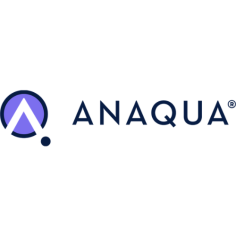An interview with Dan Anderson, CEO of SeeUnity
Nearly a year ago, SeeUnity and HighQ partnered to empower our clients with industry-leading legal tech integration. As law firms and corporate legal teams continue to embrace technology to improve transparency, efficiency, and service delivery, integration becomes even more important.
We recently sat down with Dan Anderson, CEO and cofounder of SeeUnity to talk about the importance of integration, the rise of the cloud, and more. Explore all the insights here.
HighQ: Welcome Dan, thanks for taking some time to talk with us today. We’re excited to hear your story, get an inside look at how SeeUnity works and hear your insights about the legal industry.
Let’s get started with a little background about you.
Dan: Thanks, I’m happy to have the opportunity to talk with you today.
I’m Dan Anderson, the CEO and one of the cofounders of SeeUnity. I have been in the ECM space for, really, my whole career. Mainly in sales and marketing. I’m primarily responsible for the daily operations, as well as the strategic direction of the company.
HighQ: So, tell us the SeeUnity story. How did it all start?
Dan: We were founded in 2004 by Dan Hunsinger, our CTO, and me. He and I worked together in a previous life and just saw a need. Initially, it was sparked when SharePoint was introduced into the market, and we noticed the impact it had on business processes and workflow.
We saw a niche in the market for bringing together SharePoint with underlying applications. Our vision for SeeUnity was to be able to provide a simple way for organizations to either migrate content or coexist with SharePoint as a portal or enterprise search collaboration platform.
We really set out to provide an easy way for companies to make a transition and extend the value to the organization by leveraging SharePoint, improving user options, and being able to integrate with the underlying applications.
HighQ: When SeeUnity started, what did the company look like?
Dan: It was just the two of us. We basically bootstrapped it, and we used our existing relationships. Our initial go-to-market partner was OpenText. I had worked in various capacities with some of the companies they had acquired, and Dan Hunsinger was the CTO at a company they had acquired.
We started there. Building that partnership was essential to our go-to-market strategy because their customers had a big need for SharePoint. We allowed them to preserve their existing customer base, grow, and increase user adoption throughout the organization. Initially, we did it on our own, and then we decided a few years into it that it made sense to become more aligned with OpenText. Later, they started reselling our products. They went to market, and immediately we had several hundred customers just based on that partnership.
Fast-forward to today. Our products have evolved to meet the integration, migration and synchronization needs of not only the legal industry, but also Fortune 500 businesses and government entities with a growing list of over 20 connectors.
HighQ: So now that the company has grown, what does a day at SeeUnity look like for you, Dan?
Dan: That’s a good question. I’m pretty involved with overseeing the day-to-day operations and strategic direction. I spend a lot of time working with strategic partners, like HighQ, and I’m looking forward to building new partnerships as new technology comes down the road.
I’m also still very involved with our customers. I think that’s one of the things that we try to stay true to is paying very close attention to our customers and partners. I’m not involved in every deal, but I often check in with my team and make sure that we’re listening, we’re learning, and addressing the needs of both our customers and partners.
HighQ: I know the details of what SeeUnity does is somewhat technical, but could you explain it like I’m five; how does it all work?
Dan: At the end of the day, we allow users to access mission-critical or important information from a single point. In the case of HighQ, we bring content together. HighQ is basically the content hub, and we simplify and streamline the ability to connect and integrate with the various applications that attorneys, paralegals or users need to perform their tasks within the organization.
HighQ: What do you wish people knew about integration?
Dan: Honestly, people tend to underestimate the level of effort it takes to integrate technology. We try to make it simple. The true value of an integration that essentially allows you to very easily connect and go across various systems is often misunderstood.
We try to make it easy and transparent from a technical perspective. From a user perspective, it allows people to work within the various applications that they need to do their job. Then, we update the systems and allow things to happen on the back end, which is very seamless and transparent from a user, as well as an IT perspective.
HighQ: Do you see a big difference in how law firms and corporate legal teams approach legal tech and integration specifically? Are they typically looking for the same results?
Dan: Well, yes and no. They definitely approach it differently, so it depends on what we’re looking at from an investment or cost perspective. The systems are different, in the case of a law firm, they all tend to standardize on very similar types of applications, so we are familiar with the common integration points, applications, and platforms that they use.
In the case of corporate legal, they have integration needs, as well. It’s just different. They work autonomously in a lot of cases, from what I’ve seen, within a general corporate infrastructure.
HighQ: So as a content integration company, you sit at an interesting intersection between a lot of the tech out there. Are there any gaps that you see in the market that legal tech has yet to address?
Dan: I think the biggest issue is the cloud. As people are moving to the cloud, it’s very different in terms of the requirements and how you integrate. It’s a huge trend and it’s going to continue to grow. Models are changing related to how you integrate and relationships with vendors are much more important now.
From a customer perspective, they’re getting out of the business of owning and managing data centers. With that, there’s a huge, tremendous cost savings as well as some challenges, obviously. It’s really a shift in terms of how their applications are being supported and the integration points. The changes run across the whole ecosystem.
We’re all starting to catch up, and we’re on the forefront of a lot of that now. Educating our partners about the complexities and differences of going from an on-premise solution to the cloud while maintaining our solutions and our integrations becomes critical. It can be a challenge to make sure that as our partners push out updates that we’re in sync. With cloud providers, ECM vendors, and collaboration platforms, we are still learning how to manage the ecosystems of the partner, so things don’t get broken, and the customer doesn’t come into the office in the morning unable to access their systems.
I think the whole model is changing, and the way that we’re going to operate and do business is changing significantly―predominantly based on the movement to the cloud.
HighQ: With that in mind, what advice would you give to a law firm or a corporate legal department as they begin to look for legal tech?
Dan: First and foremost, they need to understand the requirements and involve the users. We often ask our customers, “What are you trying to do?” And sometimes, they don’t really know, which is scary. The response is often, “We just need to integrate this,” instead of asking, “Why?”
They should ask questions to make sure they understand what the goal really is. Does it make sense, and how are they going to meet their objectives? Once you define that, then it’s all about picking the right partner. There are a lot of options out there, but what we really do well with our customers is create a true partnership. We stay very closely aligned and make sure that you find the right vendor. There should be open communication and innovation when you work together.
There are a lot of changes going on right now. It’s going to be crucial to pick vendors who are closely aligned with one another and able to support your goals together.
HighQ: What surprised you most about the legal industry in 2018?
Dan: I think, honestly, it’s the adoption of the cloud. Particularly within law firms. The BigLaw firms are moving towards the cloud. It’s happening a lot quicker than I expected it, and we’re seeing it in the firms and customers we work with. They’re all moving there, and it’s happening fast.
HighQ: Do you have any predictions for 2019?
Dan: The cloud is here, it’s now. It’s moved beyond where we were a couple years ago when there was just a lot of interest, but we’re now seeing big firms and companies actually go that direction. It’s happening, and that trend is going to continue. And as we see that shift, I think it’s going to grow significantly in terms of where we are this year and next year. It’s going to be 100 percent cloud-focused.
HighQ: What’s next for SeeUnity? What are you most excited for?
Dan: I’m most excited, honestly, about our technology partnerships. We’ve historically always worked with our resale partners. They typically work directly with the customer, depending on the technologies that they support. We’ve always worked in that capacity in an indirect model. Now we’re seeing a huge uptick in interest from a technology partner perspective. It’s not a new business for us, but it’s emerging into something that we had envisioned when we first started the company. We’re now seeing a fairly healthy trend with technology companies that are looking to leverage our connectors.
They’re incorporating our connectors into their products to extend their reach and expand the value of their offerings based on customer demand. The availability of such innovative technology is a big win for the customers. That’s really what’s exciting for me is our new technology partners. They are going to grow and open up new markets for us as well. Having the ability to work together in this way and support that moving forward is pretty exciting for us.
For instance, our partnership with HighQ has, within a very short period of time, less than a year, brought on over 50 customers. Many are Am Law 200 firms. For us, that’s really significant. The ability to build and execute a solid business model and enter a new channel with HighQ―it’s really amazing.
HighQ: It’s been a great partnership for us as well and we’re excited to see what 2019 brings. Thanks for spending some time with us today and giving us an inside look at SeeUnity as well as your own industry insights.
Dan: My pleasure, thank you.



